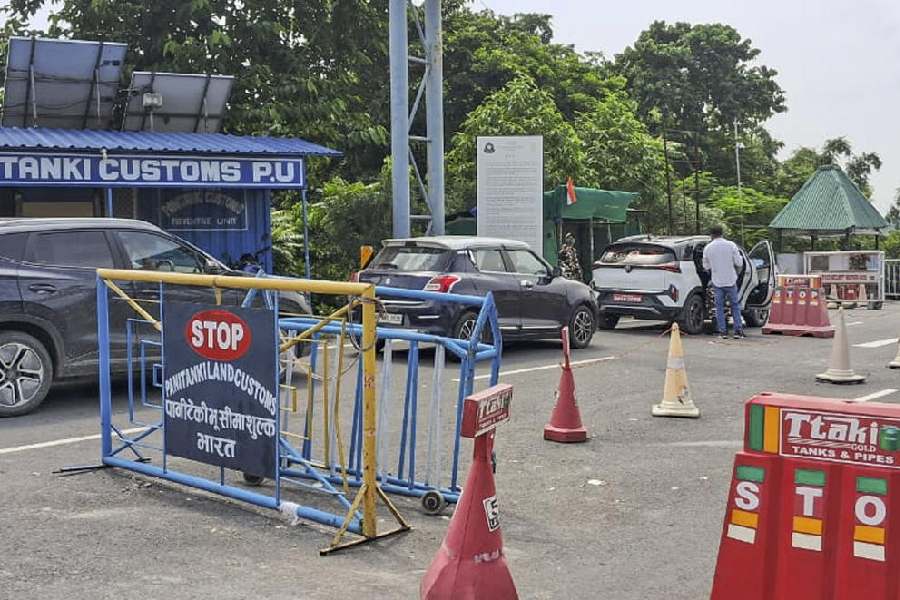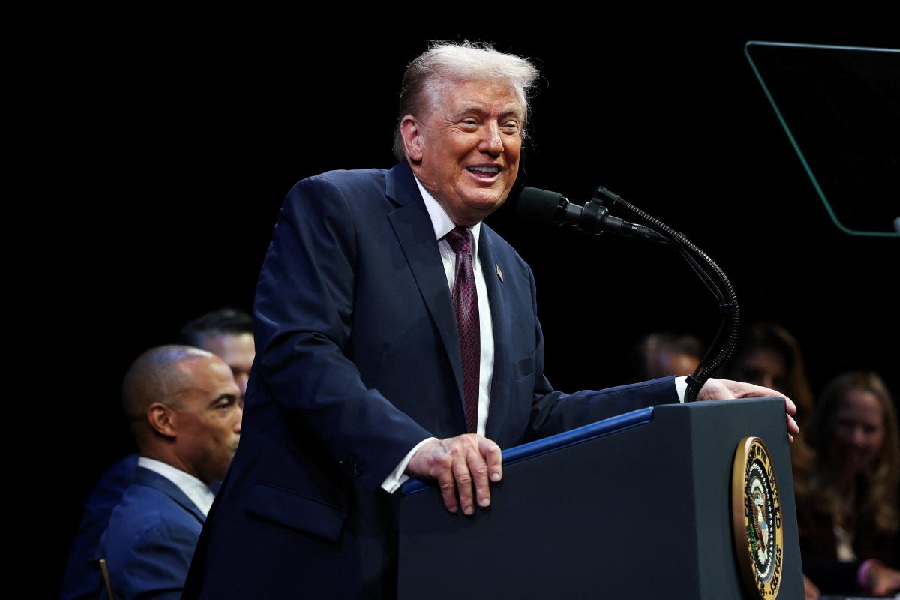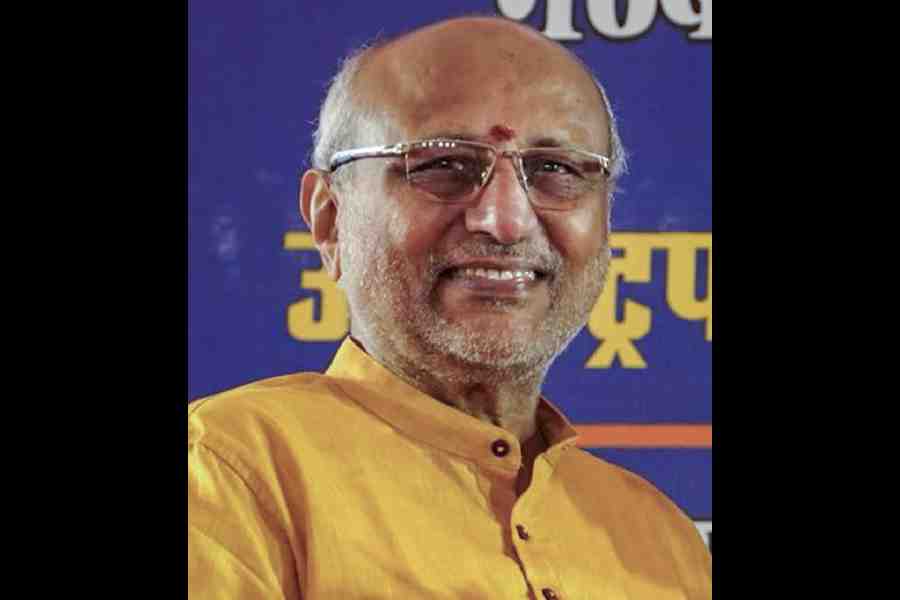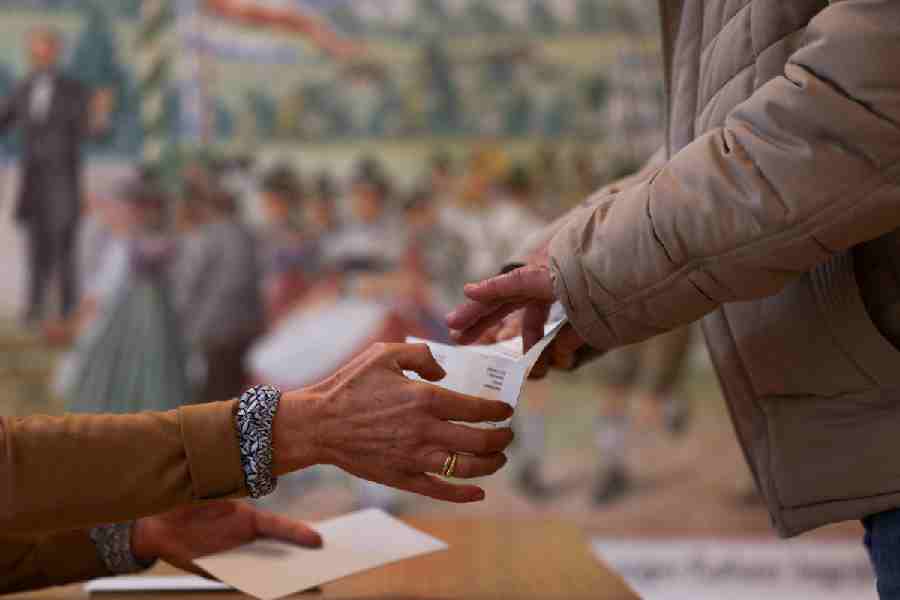If you want a pair of slippers and scissors, you are too late. And forget about laying your hands on a cot or a ceiling fan. These images — all electoral symbols — have already been taken.
Symbols are the flavour of the season. Two independent candidates from Ranchi, Ranjit Mahato and Lal Jatindra Dev, fought over the cot symbol earlier this month. Two others, Arshad Ayub and Abdul Hassan, wanted the fan. Finally an Election Commission of India (EC) officer drew lots to settle the matter. The cot went to Mahato and the ceiling fan to Arshad. Jatindra had to be satisfied with an autorickshaw, and Hassan with scissors.
These icons are an essential part of the elections that are being held across India in phases. The symbols of the bigger parties — an open palm, a lotus, hammer and sickle, bicycle and elephant — are known to the voters. But the advent of the jhadoo — the Aam Aadmi Party's symbol, and message — has put the spotlight on all the curious objects that parties and candidates select.
Symbols have been a part of the process from 1951-52, when the first elections were held. The government wanted to help unlettered people identify the party or candidate of their choice.
'These have played very important role in India's electoral politics for voters who have not had any formal education but are politically conscious,' Dhirubhai Sheth, senior fellow, Centre for the Study of Developing Societies (CSDS), stresses.
India's literacy rate may have gone up from 18 per cent in 1951 to 74 per cent in 2011, but symbols are still important. With the number of parties growing massively (up from 53 in 1951 to over 1,600 in 2014), the pictures continue to help voters — and candidates. Not surprisingly, the number of free symbols of the EC has gone up from 25 to 87 in six decades. Apart from these listed symbols, candidates can ask for special figures which the EC has to endorse.
-




Logo list: (From top) Dr Daljit Singh, AAP candidate for Amritsar, and symbols of the Trinamul Congress, Congress, BJP and Jai Samaikyandhra Party; (below) the symbol Indira Gandhi chose when she broke away from the Congress in 1967

'With a large number of candidates fighting the polls, it is difficult for voters to remember their names. So symbols help them recognise their candidate,' points out N. Bhaskara Rao, chairman, Centre for Media Studies, New Delhi.
Some political parties have been innovative while designing their symbols. In 1997, when Mamata Banerjee left the Congress, she wanted to send a strong message to her parent party that the grassroots level workers were with her. So she called her party Trinamul Congress (which means grassroots).
The newly-born party needed a symbol. One winter night, in her Kalighat home, Banerjee — an occasional artist — drew a logo depicting two grass flowers. 'The symbol came naturally to her because it shows what we are — a party for those at the grassroots,' spokesperson Derek ' Brien says.
The AAP was lucky enough to find a tailor-made symbol. 'The moment we saw the 'broom', we grabbed it,' says Yogendra Yadav, AAP political affairs committee member. 'It shows our party is for the working class and wants to cleanse corruption. But when we chose it, some advertising agencies said it was 'downmarket' and urged us to change it. But we stuck to it.'
This year, three new symbols — a pair of slippers, green chilli, and nib with seven rays — have been added to the EC's list. The slippers have gone to former Andhra Pradesh chief minister N. Kiran Kumar Reddy's new Jai Samaikyandhra Party. 'People wear a chappal for protection and therefore the party chose it — as its motto is to protect the people of Andhra,' a party official says.
The party says the symbol also alludes to the Ramayana. When Rama was exiled, his brother Bharata kept his elder brother's wooden sandals at the foot of the throne as a symbol of his rule. 'Footwear symbolises great service,' the official adds.
The green chilli is in the midst of a tug of war — wanted by both the UP-based Al-Hind party and actress Rakhi Sawant, who is fighting elections from Mumbai.
The EC bars the use of religious symbols and national emblems. It doesn't allow animals because of protests from animal rights groups. Animal symbols were earlier allowed — the Bahujan Samaj Party and the Asom Gana Parishad both have an elephant as their symbol, while the All India Forward Bloc has a lion.
Among the free symbols are an electric pole, a telephone, table lamp, letter box, sewing machine, ring, stethoscope, pressure cooker, frock, necktie, nail cutter and helmet.
'Since elections are all about serving the people's needs, we usually think of articles of daily use,' a senior EC official says. 'It is not our job to add meaning to it. Let the political parties make the necessary interpretations.'
Some free symbols do strike a chord with political parties. The Congress got its current symbol — an open palm — from the EC list in 1978. The party earlier had a pair of yoked bullocks as its symbol. After Indira Gandhi broke away from the Congress in 1967, she chose a calf and a cow as the symbol of her faction. The open palm became the symbol after she formed Congress (I). 'We chose it because it is easy to recognise,' Congress leader Janardan Dwivedi says.
The political grapevine has it that the symbol was decided by Congress leader Buta Singh, who sought Gandhi's approval over the phone. She kept hearing haathi (elephant), instead of haath (hand). She said no to it even as Buta tried to explain that it was not the elephant, but the open palm symbol he was advising her to pick, writes The Telegraph journalist Rasheed Kidwai in 24 Akbar Road.
Gandhi handed over the phone to Congress leader P.V. Narasimha Rao, who understood what Singh was saying. 'He shouted, 'Buta Singhji, panja kahiye, panja.' Indira was relieved and took the receiver and said, 'Haan, haan, panja theek rahega (Yes, yes, the open palm symbol will be appropriate).'
The Bharatiya Janata Party recently took away the orange colour of its symbol, a lotus, and turned it black and white to make the icon more visible. 'The lotus represents nationalism because it is also the national flower,' party spokesperson Nirmala Sitharaman says. 'Also, as per Hindu mythology, Lakshmi, the goddess of wealth, and Brahma, the creator of the universe, sit on a lotus. The lotus evokes strong Hindu sentiments.'
Political parties like their symbols to be distinctive. Recently, the AAP urged the EC to remove the symbol of a torch with rays arguing that it was similar to its broom. The EC modified it and it's now a torch with no rays. It also removed a hat from its list of symbols for Andhra Pradesh at the request of the Telangana Rashtra Samithi, which held that the hat could be mistaken for its own symbol, a car. And it removed the road-roller for Haryana to avoid confusion with Haryana Janhit Congress's tractor.
A symbol, clearly, is not just a picture. A victory or defeat could depend on it.
Among the free symbols are an electric pole, a telephone, table lamp, letter box, sewing machine, ring, stethoscope, pressure cooker, frock, necktie, nail cutter and helmet











